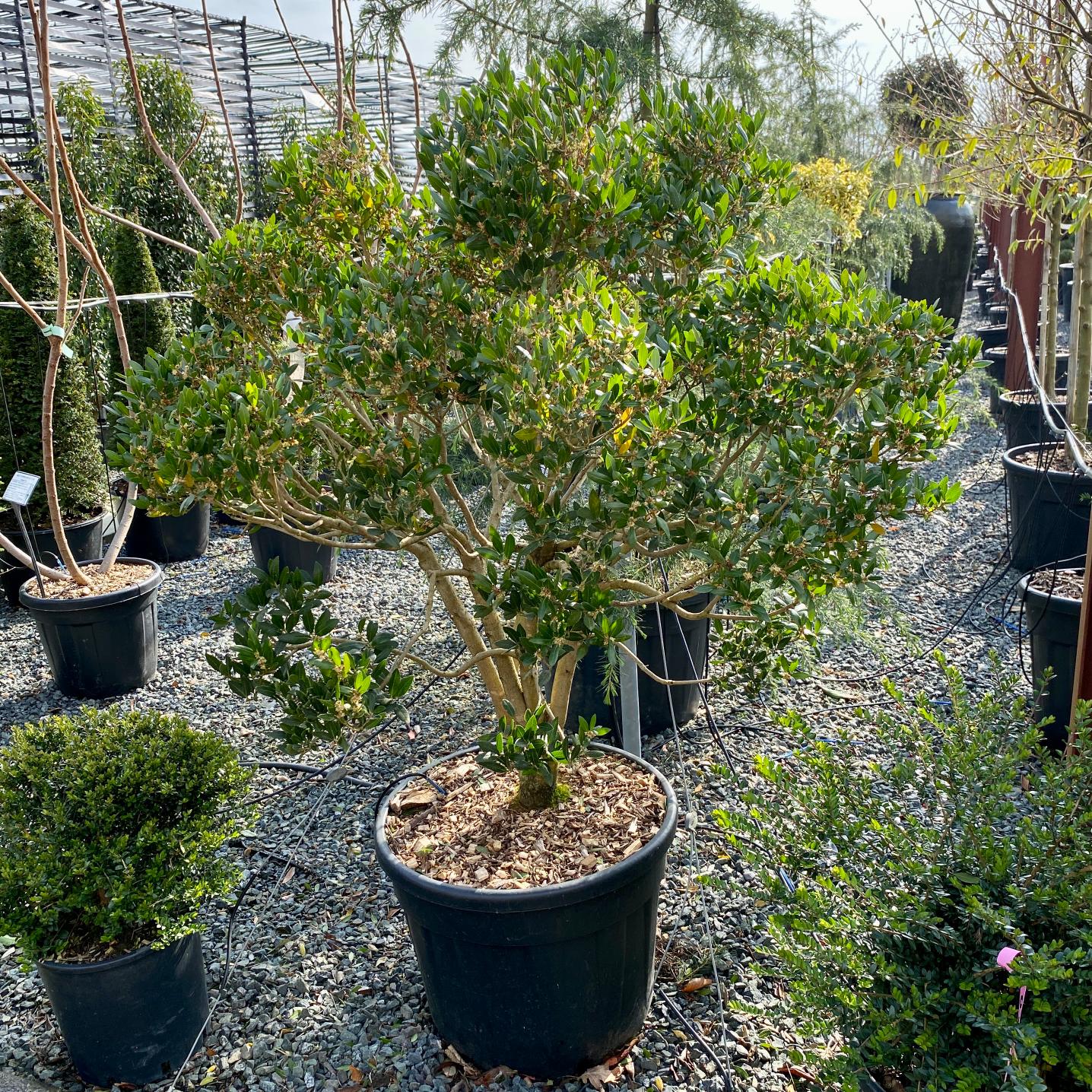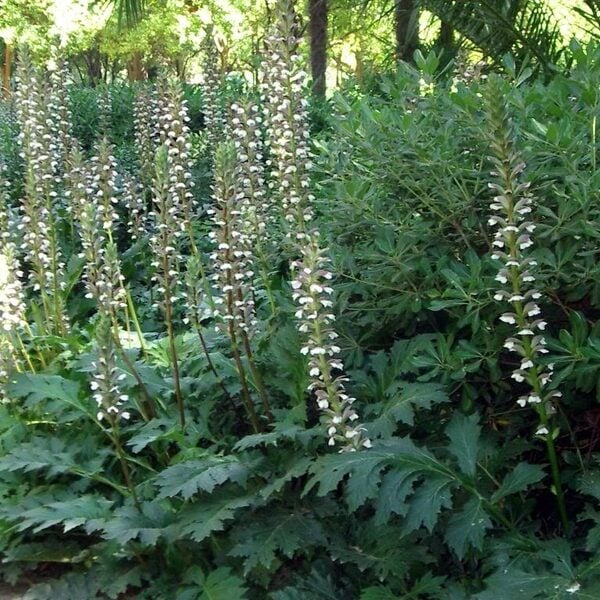Phillyrea latifolia (Green Olive)
Dense, dark evergreen that produces a crown like broccoli. Tough, posh and very long lived. To 20 ft after 25years, to 40ft after 250 years. The essential architectural plant. Please contact us for stock availability and sizes.

Hardiness level Green
This is the jewel in the Architectural Plants Panoply of Trees. Not only shapely in the extreme but tough as old boots to the point of being impregnable. In its native habitat of arid northern Spain it barely grows beyond a shrub but curiously, in this country (where the growing days are long and often wet), it becomes a spectacular little tree and long lived - several centuries quite often. If you want it to grow faster, water it. Simple as that. Growth to 15ft in 15 years can be expected. It'll grow in sun or shade and on any soil but to get the best out of these trees they need space and light. You could say, the more exposed, the better. A good coastal plant but not right by the sea. They'll survive near the beach but like the closely related Olive, the leaves tend to get blown off in the winter storms. A well grown one of these is the nearest thing to giant broccoli you'll ever see. Comparable with the wonderful shapely Tobiras of Venice - but bigger. Some people can see the relationship with olives from their habit but it's not always obvious - a much denser, tighter arrangement than olives. Wait for them to flower and you'll see what we mean - they're identical (small white and not very dramatic). The old trees mentioned below are up to 35ft tall but even wider across. It clips beautifully. Hedges, topiary and Niwaki to name a few. Its only peccadillo is a terrible weakness for white fly. They're inconvenient but there's little you can do - so ignore them. Its hardiness is such that even in the very coldest and harshest winters I've ever known, it's composure remains intact. No damage to leaves or bark whatsoever. I wish we could say that about more evergreens.
This tree has rather aristocratic associations (we call it posh) - but only because of its long lineage and its widespread use in horticulture for many centuries. We often sell these to English Heritage and the National Trust when they're restoring Tudor, Elizabethan or Mediaeval gardens. There's masses of evidence to show that Phillyrea was used extensively hundreds of years ago. The diarist John Evelyn (a keen gardener in the 17th century and contemporary of Samuel Pepys) writes of them frequently - as if they were then as common as box, yew and holly. What happened? They used to be so widespread and now they're rare. Garden historians are perplexed and so are we.
Notable specimens are at Ickworth House (National Trust - pictured) in Suffolk, by the war memorial in Trumpington south of Cambridge (pictured), the Washington roundabout on the A24 in West Sussex (pictured) and outside the church in Chideok in Dorset (not pictured). Not sure the one in Billingshurst High Street could be described as notable in the conventional sense but it's full of character and I always find that seeing it is the most enjoyable feature of any visit to Billingshurst. By the mini roundabout by the shopping centre. Another one pictured is by the mill pond near the sailing club in Emsworth (Hampshire)
Propagated by us from cutting from a tree that once stood in the garden of Sedgewick Park in West Sussex. Sadly, lost in the Burns Night storm of 1991.
Last photo courtesy of google street view - Trumpington, Cambridgeshire.
N.B. When clipping several plants with the same tool, have a bucket containing a 5% bleach solution and swish your blades around for 30 seconds between plants to sterilise them. This will help avoid the chance of cross contamination of disease.
As with all woody plants, plant high, exposing as much of the taper at the base of the trunk as possible. Allowing soil to accumulate round the base of a tree can be fatal. Keep very well watered when first planted.
Additional Information |
|
|---|---|
| Soil Type | |
| Light | |
| Plant Type | Evergreen, Grown by Us, Hedges, Screening Plants, Shrubs, Trees |
| Continent of Origin | |
| Specialist Plants | Grown by Us, Japanese, Mediterranean, Niwaki, Rare & Unusual (Collectables), Topiary, Balls and Blobs |
| Tree Size | |
| Situation | Coastal, Exposed (To wind and sun), Mild City Gardens, Plants for Pots, Sheltered Garden |
| Flower Colour | |
| Hardiness | |























